Blue Earth Alliance: Rubén Salgado Escudero: Solar Portraits
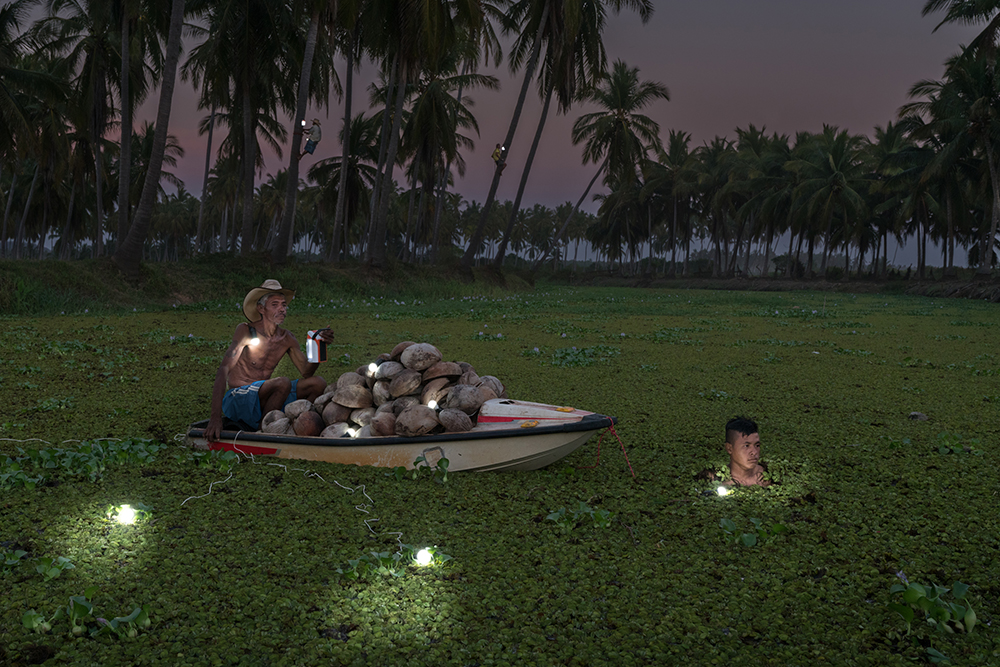
©Rubén Salgado Escudero, Cristobal Cespedes Lorenzo (51) sits on his raft while carrying coconuts across the river to his home in Copala, Mexico. Cristobal and Francisco Manzanares Cagua (16) both work picking coconuts which they then sell to a company which makes cocounut butter and oil.
Rubén Salgado Escudero’s “Solar Portraits” employ a combination of aesthetics and information to engage viewers with the way solar energy can transform the lives of people without access to traditional sources of electricity. His beautifully staged portraits, based on his subjects’ input and lit with solar-powered light sources, are an artful and unique approach to visual storytelling about the topic of solar energy, and its environmental and economic ramifications. – Blue Earth Alliance
Rubén Salgado Escudero was born in Madrid, Spain. He lived in the United States throughout his teenage years, graduating from the Savannah College of Art and Design, and later lived 10 years in Berlin, Germany. In 2014, while based in Myanmar, he began his ongoing project “Solar Portraits,” which has gained support and has been published by National Geographic Magazine, TIME, El Pais, Spiegel, and the United Nations amongst others.
Salgado Escudero’s works have been exhibited and sold in more than over 20 cities across the world including New York, London, Tokyo and at the “Rencontres D’arles” festival in France. He is a member of “The Photo Society,” a community of National Geographic Magazine photographers.
As an experienced lecturer, Salgado Escudero has given a TEDx Talk in Beijing, various talks worldwide for National Geographic Learning, as well as in venues such as Temple University Tokyo and the Sony Gallery in New York City.
His projects have been published in most major international publications, and have won various international awards, including the Sony World Photography Award two years in a row, and POY Latam.
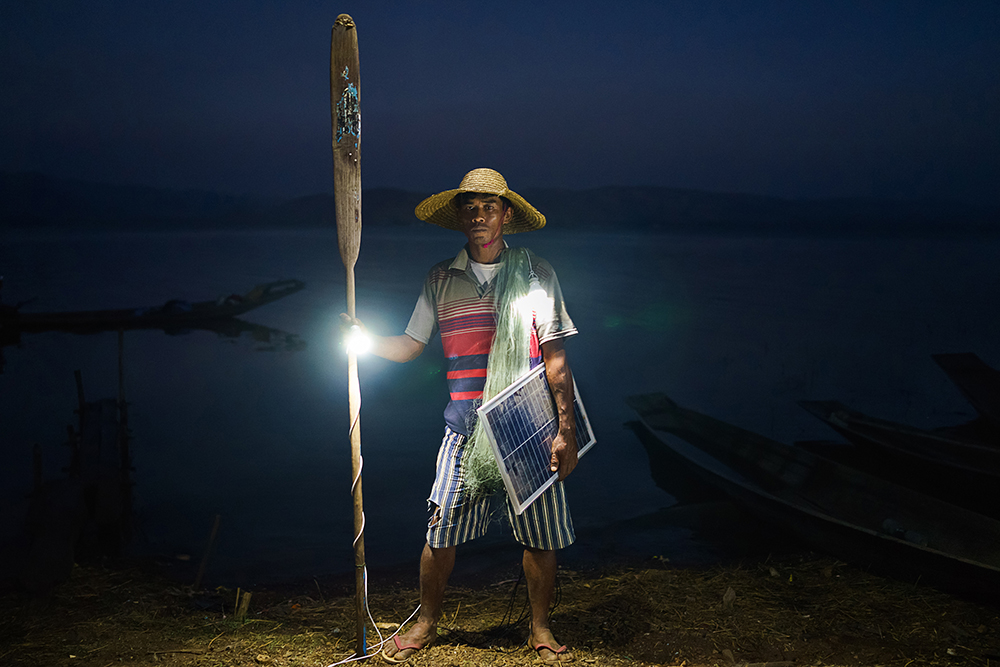
©Rubén Salgado Escudero, Ko Win Zaw Oo, 38, fisherman and father of 2 by his boat in Lui Pan Sone Village. Kayah State. Just 26% of Myanmar has access to electricity, at least half of whom live in cities. In rural areas, of the estimated 68,000 villages in the country, just 3,000 or so have any sort of access to power. Solar power is a viable source of energy which can rapidly improve lives overnight. The scenes have all been lit only by solar powered light bulbs which are contributing to the improvement in these people´s standard of living.
Solar Portraits
The International Energy Agency estimates that roughly 1.1 billion people in the world still live without access to electricity. More than 95 percent of these people are either in sub-Saharan Africa or developing Asia. In these parts of the world, almost all rural labor is still non-mechanized, candles—which are both expensive and dangerous—are the only source of light available once the sun sets. As building the requisite infrastructure to connect remote, rural villages to the grid will still take a long time, solar energy is a viable and much-needed solution that has the potential to improve the lives of millions immediately. Small, inexpensive photovoltaic power (PV) systems can provide households with at least 12 hours of light during the night, allowing people to do more with their waking hours at no additional cost.
Looking at the larger picture of our planet’s environment, solar energy has the potential to make a substantial positive impact on the Earth’s C02 levels. The Environmental Protection Agency shows that generating electric power causes over a third of all green house gas emissions, so reducing the electricity we draw from the grid means reducing carbon emissions.
These portraits depict the lives of inhabitants of remote areas who, for the first time have access to electricity through the power of solar energy. Each subject was asked how having electricity has affected their life. The portraits were set up within their environment, according to what they expressed. The scenes have all been lit only by solar powered light bulbs which are contributing to the improvement in these people’s standard of living. -Rubén Salgado Escudero,
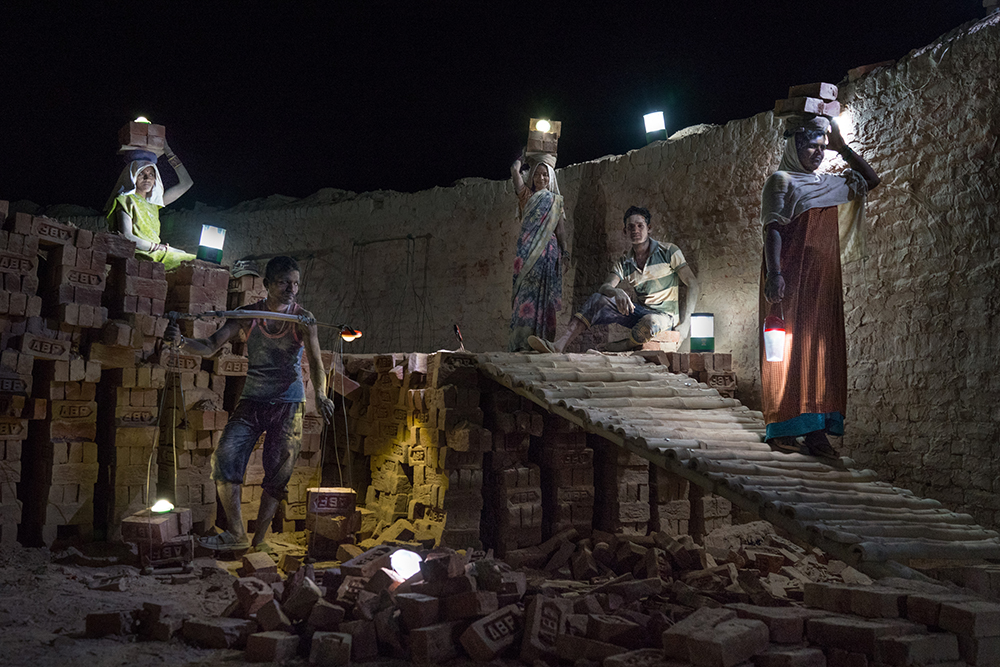
©Rubén Salgado Escudero, (June 5, 2015) Workers use solar lamps to collect newly baked bricks at night to be arranged in Amit Brickfield, Saipur, India. Roughly 1.1 billion people in the world live without access to electricity, and close to a quarter of them are in India, solar power is a viable source of energy which can rapidly improve lives. The portrait was set up using solar lights as the only source of illumination.
Blue Earth Alliance is focused on partnering with photographers and filmmakers who educate the public about critical environmental and social issues. Founded in 1996 as a 501 (c) (3) non-profit organization by photographers Natalie Fobes and Phil Borges, Blue Earth Alliance supports visual storytellers through fiscal sponsorship and other resources. The organization extends tax-exempt status to photographers and filmmakers whose projects are accepted after an application and review process. Accepted projects are allowed to seek grants and tax-deductible donations under the sponsorship of Blue Earth Alliance. Learn more about the organization and its sponsored projects at blueearth.org.
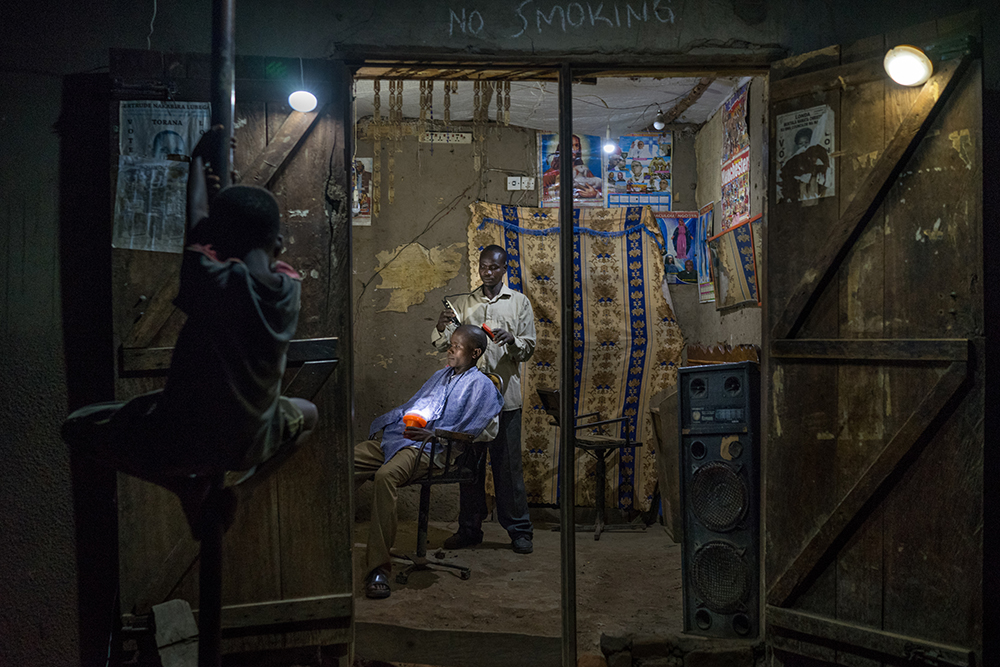
©Rubén Salgado Escudero, (May 31st, 2015) Denis Okiror (30) began using solar lights at his barbershop in Kayunga two years ago, he says most of his customers prefer to visit him in the evening. Electricity is a rare luxury in Uganda. The portrait was set up using solar lights as the only source of illumination.
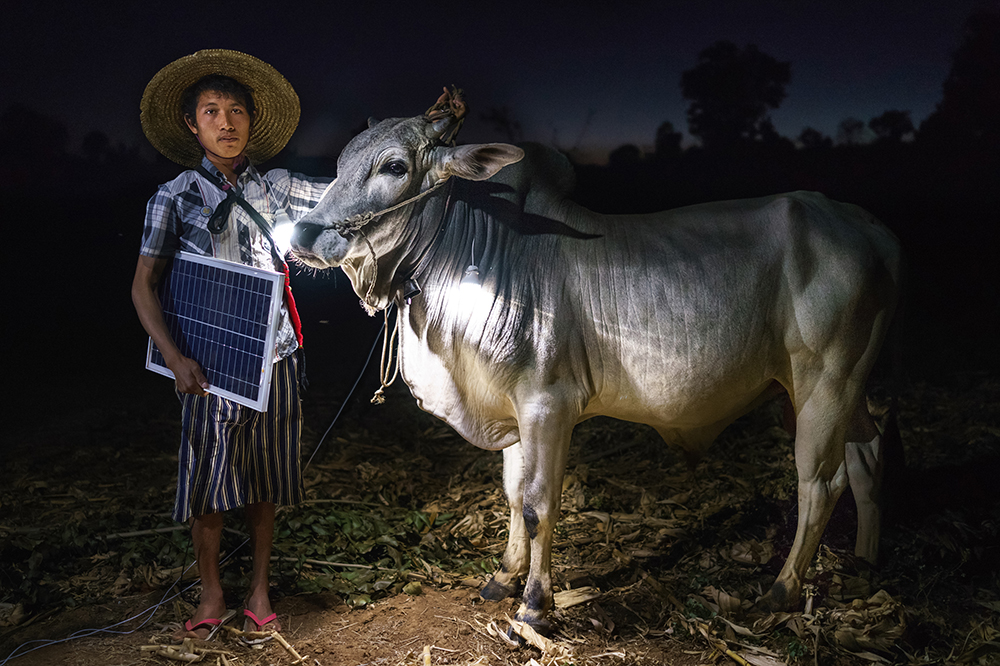
©Rubén Salgado Escudero, Mg Ko, 20 years old. A Shan farmer with his cow in Lui Pan Sone Village. Kayah State. Just 26% of Myanmar has access to electricity, at least half of whom live in cities. In rural areas, of the estimated 68,000 villages in the country, just 3,000 or so have any sort of access to power. Solar power is a viable source of energy which can rapidly improve lives overnight. The scenes have all been lit only by solar powered light bulbs which are contributing to the improvement in these people´s standard of living.
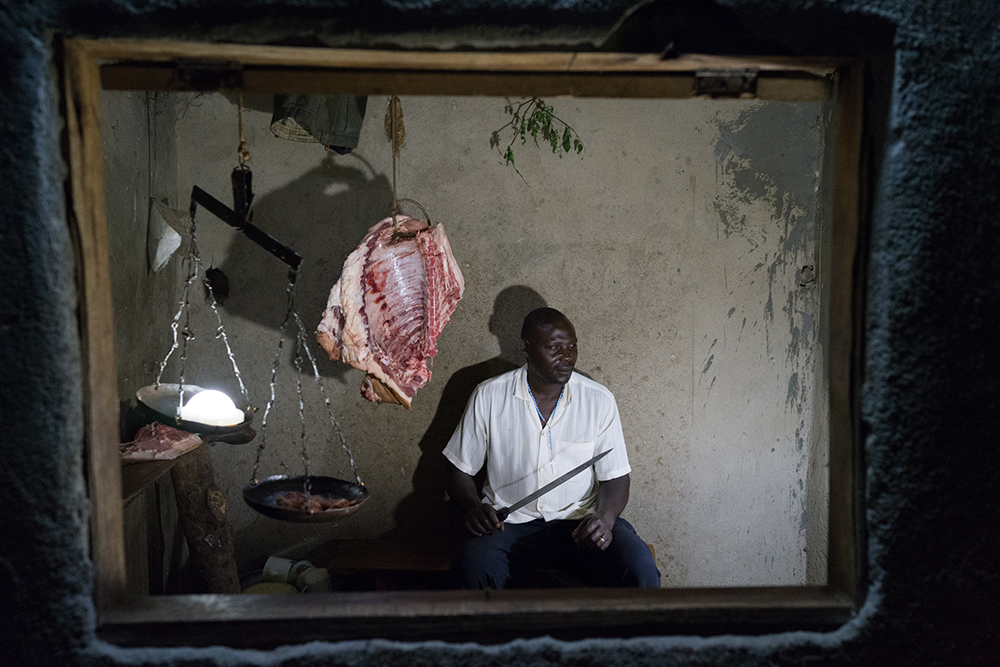
©Rubén Salgado Escudero, (May 31st, 2015) Butcher Mugerwa Lawrence (50) sits in his small shop at night where he sells meat until 1am in Kalagala, Uganda. Electricity is a rare luxury in Uganda. The portrait was set up using solar lights as the only source of ilumination.
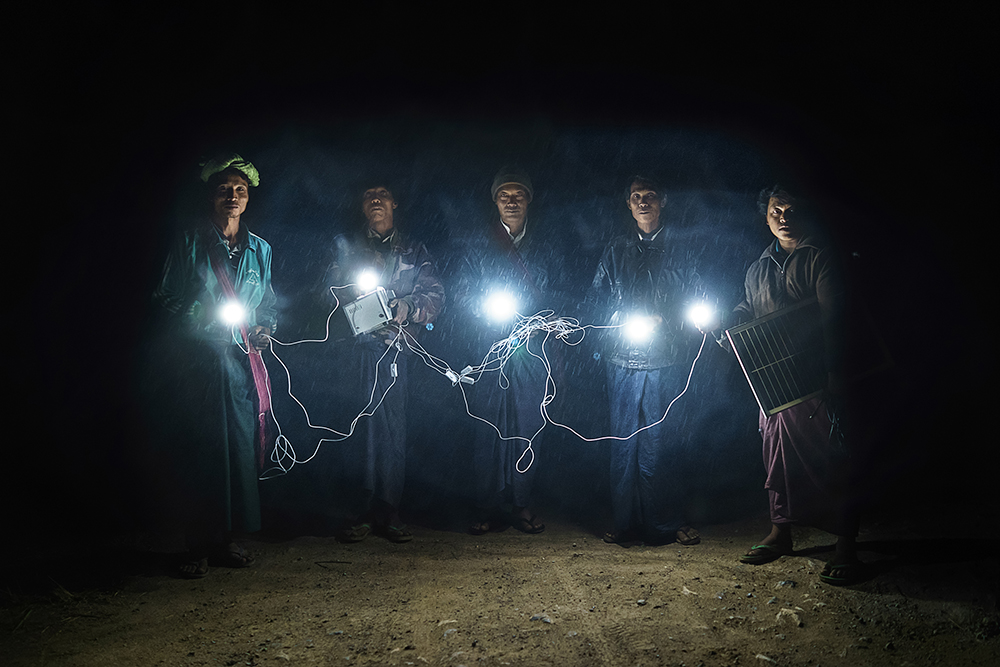
©Rubén Salgado Escudero, Village leaders walk through Inn Gaung Village illuminated by a solar panel energy system. Pindaya Township, Shan State. Just 26% of Myanmar has access to electricity, at least half of whom live in cities. In rural areas, of the estimated 68,000 villages in the country, just 3,000 or so have any sort of access to power. Solar power is a viable source of energy which can rapidly improve lives overnight. The scenes have all been lit only by solar powered light bulbs which are contributing to the improvement in these people´s standard of living.
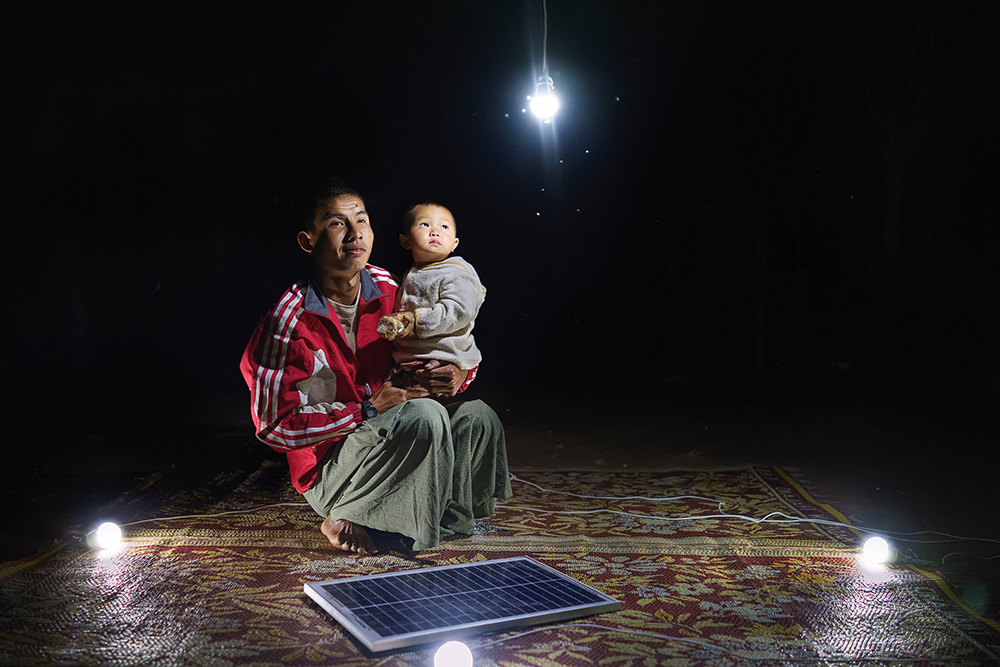
©Rubén Salgado Escudero, Ko Ba Aye, 26. and his 1 year old son Sai Kaung Htet Mon outside of their home in Lui Pan Sone Village. Kayah State. Just 26% of Myanmar has access to electricity, at least half of whom live in cities. In rural areas, of the estimated 68,000 villages in the country, just 3,000 or so have any sort of access to power. Solar power is a viable source of energy which can rapidly improve lives overnight. The scenes have all been lit only by solar powered light bulbs which are contributing to the improvement in these people´s standard of living.
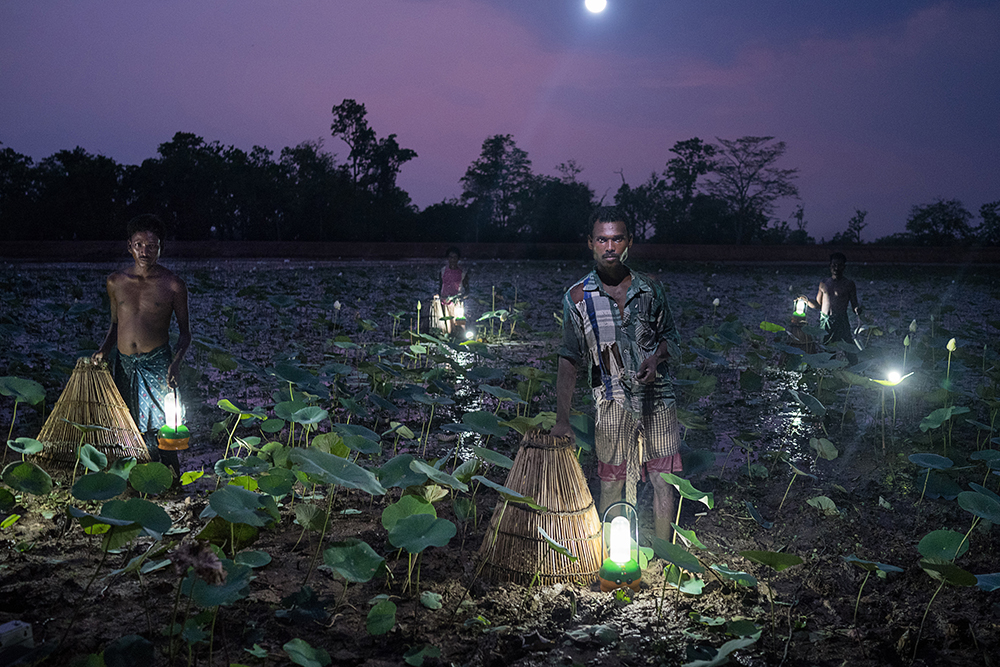
©Rubén Salgado Escudero, In India’s state of Odisha villagers trap fish using cone-shaped baskets and solar light. Fewer than half of Odisha’s 42 million residents use grid electricity. Roughly 1.1 billion people in the world live without access to electricity, and close to a quarter of them are in India. The portrait was set up using solar lights as the only source of ilumination.
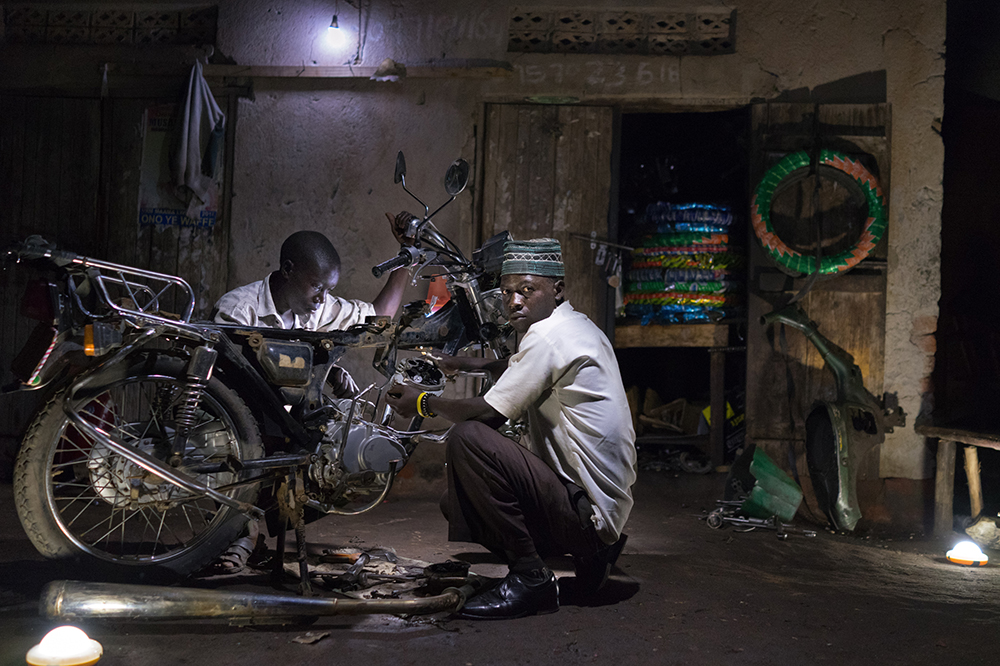
©Rubén Salgado Escudero, (May 30th, 2015) Ibrahim Kalungi and Godfrey Mteza, both 20, work at night in their motorcycle repair shop in Nbeeda, Uganda. The mechanics credit solar lights with enabling them to work longer hours and earn more money. Electricity is a rare luxury in Uganda. The portrait was set up using solar lights as the only source of ilumination.

©Rubén Salgado Escudero, Grade 11 students do their homework in a solar-powered after-school community center near in Taman Chan Village, in Dala Township. Just 26% of Myanmar has access to electricity, at least half of whom live in cities. In rural areas, of the estimated 68,000 villages in the country, just 3,000 or so have any sort of access to power. Solar power is a viable source of energy which can rapidly improve lives overnight. The scenes have all been lit only by solar powered light bulbs which are contributing to the improvement in these people´s standard of living.

©Rubén Salgado Escudero, ‘Oozie’ Too Lei, poses for a portrait on his 11-year-old elephant Ba Lei Shu at a logging camp in Bago Division, Myanmar where some households have solar panels. Oozies, or elephant handlers have worked closely with elephants for logging since over 300 years. In rural Myanmar, over 85% of the population lack access to electricity so solar light has the potential to improve lives overnight. The portrait was set up using solar lights as the only source of illumination.
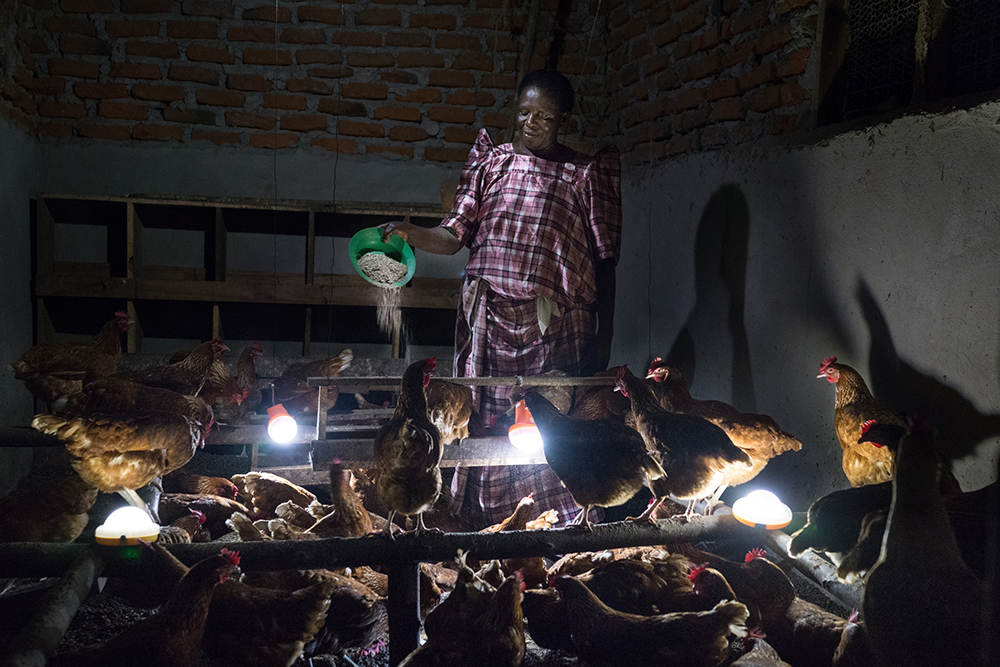
©Rubén Salgado Escudero, (May 30th, 2015) Margaret Katende (60) feeds chickens at night in her farm in Manyanma, Uganda. Chickens do not eat in the dark, so using solar light, she is able to feed them twice a day, allowing them to get bigger faster and to lay higher quality eggs. The portrait was set up using solar lights as the only source of illumination.
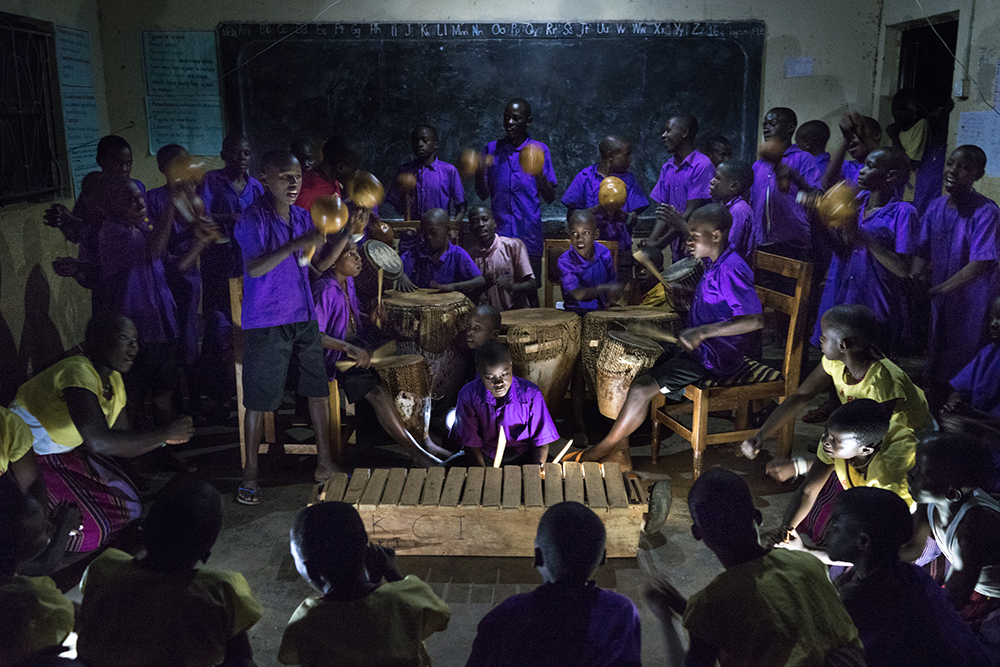
©Rubén Salgado Escudero, (May 30th, 2015) Students rehearse “Nankasa Bakisimba Muwogola”, a traditional Baganda music, at night after school for a yearly regional competition where different schools show off their musical skills in the Buganda District. Electricity is a rare luxury in Uganda so having solar lamps at this school has extended their studying hours. The portrait was set up using solar lights as the only source of illumination.
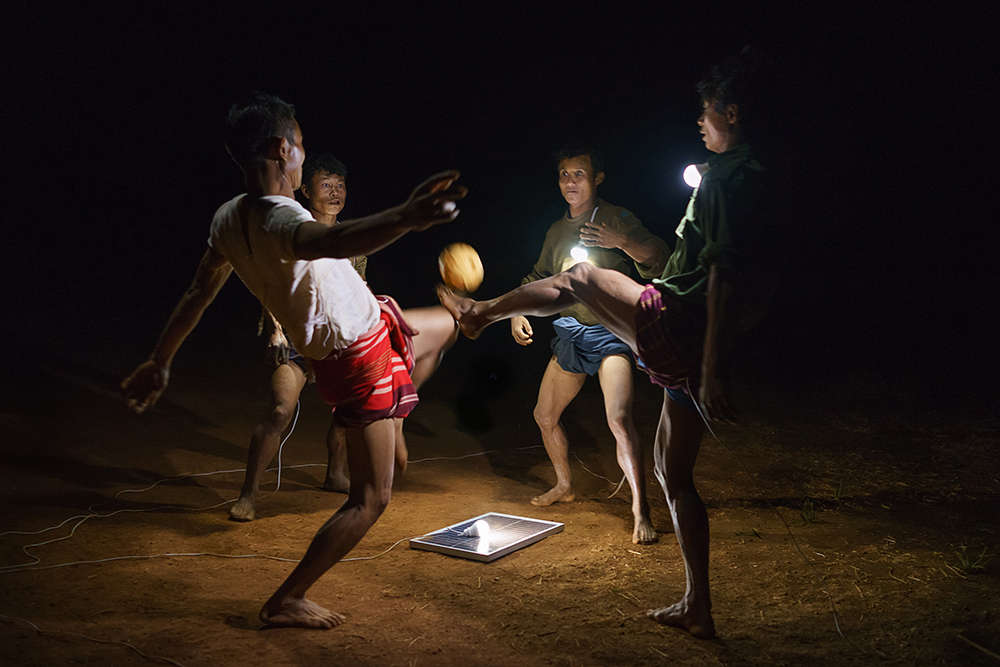
Men playing Chinlone, Myanmar’s national sport on a field in Pa Dan Kho Village. Just 26% of Myanmar has access to electricity, at least half of whom live in cities. In rural areas, of the estimated 68,000 villages in the country, just 3,000 or so have any sort of access to power. Solar power is a viable source of energy which can rapidly improve lives overnight. ©©Rubén Salgado Escudero, The scenes have all been lit only by solar powered light bulbs which are contributing to the improvement in these people´s standard of living.
Rubén Salgado Escudero can be found on Twitter and Instagram.
Posts on Lenscratch may not be reproduced without the permission of the Lenscratch staff and the photographer.
Recommended
-
Andrew Lichtenstein: This Short Life: Photojournalism as Resistance and ConcernDecember 21st, 2025
-
Paccarik Orue: El MuquiDecember 9th, 2025
-
Lauri Gaffin: Moving Still: A Cinematic Life Frame-by-FrameDecember 4th, 2025
-
Dani Tranchesi: Ordinary MiraclesNovember 30th, 2025
-
Art of Documentary Photography: Elliot RossOctober 30th, 2025
























































